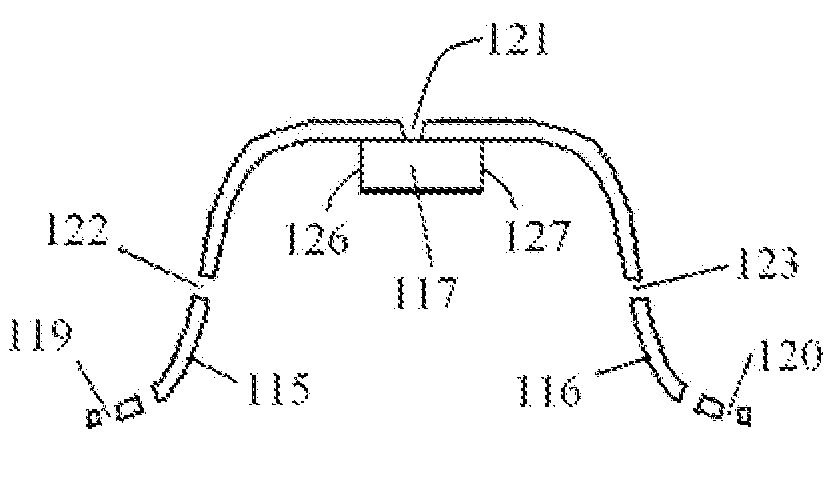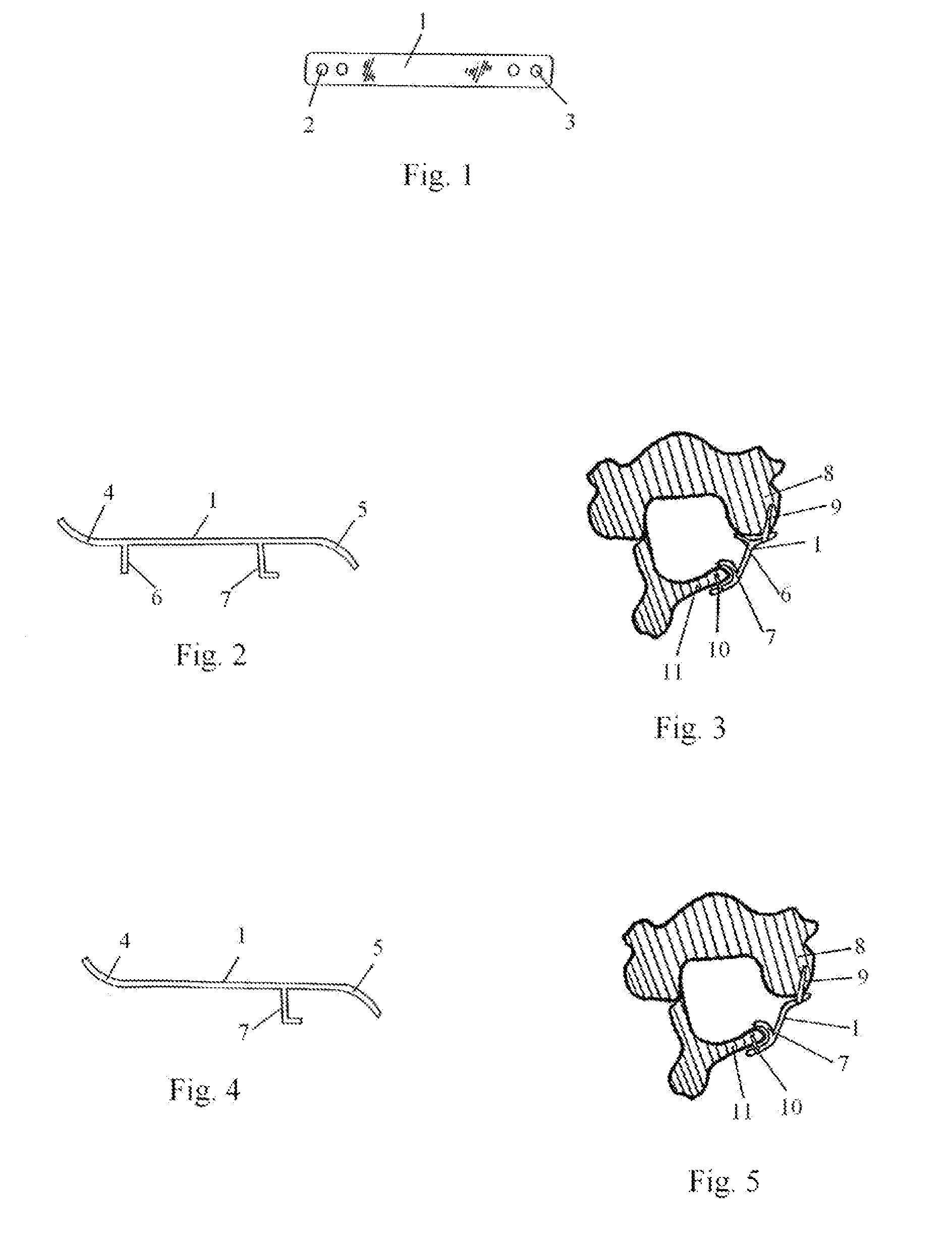Laminoplasty System
a laminoplasty and system technology, applied in the field of laminoplasty system, can solve the problems of increasing time and complexity of the procedure, increasing the risk of pseudoarthrosis and accelerating degeneration at the levels, and reducing the surgical time. , the effect of simplifying laminar fixation and fusion
- Summary
- Abstract
- Description
- Claims
- Application Information
AI Technical Summary
Benefits of technology
Problems solved by technology
Method used
Image
Examples
Embodiment Construction
[0064]The technique of open-door laminoplasty stabilization without laminar fusion undertaken with the use of the plates is illustrated in FIGS. 1-5. The plate has a top surface 1 with bone screw holes at the ends 2 and 3. The ends have an upward angle at one end 4 and downward angle at the other 5. In one embodiment as seen on the side view in FIG. 2, there is a hook appendage 7 perpendicular to the plate to engage the lamina at one end and a straight appendage 6 at the other end to secure to the facet. In another embodiment of the plate as seen in FIG. 4, there is only one appendage 7 at the end prior to the downward angle of the plate. The implanted construct is seen in FIGS. 3 and 5. The plate is secured to the lamina 11 via bone screw 10 and facet 8 via bone screw 9. The hook 7 secures the lamina in the displaced laminoplasty position. As seen in FIG. 3, the additional straight appendage 6 at the facet end allows the plate to rest on the facet 8.
[0065]In another embodiment, the...
PUM
 Login to View More
Login to View More Abstract
Description
Claims
Application Information
 Login to View More
Login to View More - R&D
- Intellectual Property
- Life Sciences
- Materials
- Tech Scout
- Unparalleled Data Quality
- Higher Quality Content
- 60% Fewer Hallucinations
Browse by: Latest US Patents, China's latest patents, Technical Efficacy Thesaurus, Application Domain, Technology Topic, Popular Technical Reports.
© 2025 PatSnap. All rights reserved.Legal|Privacy policy|Modern Slavery Act Transparency Statement|Sitemap|About US| Contact US: help@patsnap.com



